What can cause your buttocks to bleed. Understanding Anal Bleeding and Pain: Causes, Symptoms, and Treatment Options
What are the common causes of anal bleeding and pain. How can you identify symptoms of various anal health issues. When should you seek medical attention for anal bleeding or discomfort. What are the treatment options for hemorrhoids, fissures, and other anal conditions.
Common Causes of Anal Bleeding and Pain
Anal bleeding and pain can be alarming symptoms, but they are often caused by relatively benign conditions. Understanding the potential causes can help alleviate concerns and determine when medical attention is necessary.
Some of the most common reasons for anal bleeding and discomfort include:
- Hemorrhoids
- Anal fissures
- Constipation and straining
- Anal sex
- Sexually transmitted infections
- Inflammatory bowel disease
- Colorectal cancer (rarely)
Hemorrhoids: A Leading Cause of Anal Bleeding
Hemorrhoids are swollen blood vessels in and around the anus and lower rectum. They are a very common cause of anal bleeding, affecting millions of people. Hemorrhoids can be internal (inside the rectum) or external (under the skin around the anus).

Are hemorrhoids dangerous? While often uncomfortable, hemorrhoids are generally not serious and often resolve on their own. However, they can cause symptoms like:
- Bright red blood on toilet paper or in the toilet bowl
- Itching and irritation around the anus
- Pain or discomfort, especially when sitting
- Swelling around the anus
In most cases, hemorrhoids can be managed with over-the-counter treatments and lifestyle changes. However, persistent or severe hemorrhoids may require medical treatment.
Anal Fissures: Small Tears with Big Discomfort
Anal fissures are small tears in the lining of the anus. They can cause sharp pain during bowel movements and minor bleeding. Fissures are often caused by passing hard or large stools, but can also result from chronic diarrhea or anal intercourse.
How long do anal fissures take to heal? Most anal fissures heal on their own within a few weeks with proper care. This typically involves:
- Increasing fiber and water intake to soften stools
- Using stool softeners if needed
- Taking warm sitz baths to relax the anal muscles
- Applying topical pain relievers or prescribed ointments
Chronic fissures that don’t heal may require medication or, in rare cases, minor surgery to repair the tear.
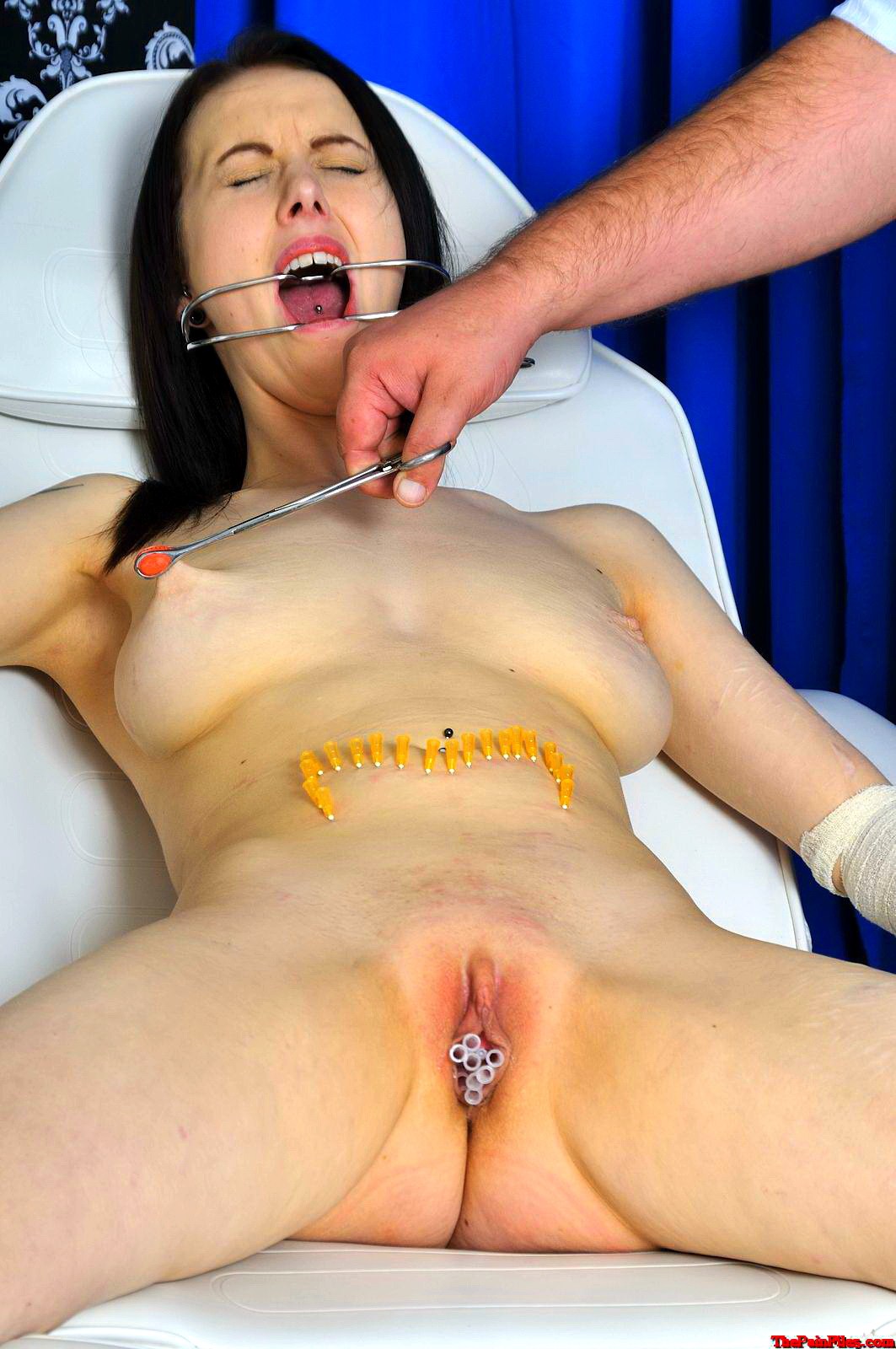
Sexually Transmitted Infections and Anal Health
Several sexually transmitted infections (STIs) can cause anal bleeding, pain, or discharge. These include:
Lymphogranuloma Venereum (LGV)
LGV is a less common STI caused by a specific strain of chlamydia bacteria. It can cause symptoms like:
- Swollen lymph nodes in the groin
- Rectal pain and bleeding
- Bloody or pus-like discharge
- Constipation
Is LGV treatable? Yes, LGV can be effectively treated with antibiotics, typically a three-week course. It’s important to complete the full course of treatment to ensure the infection is fully cleared.
Other STIs Affecting Anal Health
Other STIs that can cause anal symptoms include:
- Herpes: Can cause painful blisters or sores
- Gonorrhea: May lead to rectal discharge or bleeding
- Syphilis: Can produce painless sores in early stages
Regular STI testing is crucial for sexually active individuals, especially those engaging in anal sex. Many STIs can be asymptomatic, so testing is the only way to know for sure.

Anal Sex and Its Impact on Rectal Health
Anal sex can sometimes lead to bleeding or pain, especially if proper precautions aren’t taken. This can be due to:
- Micro-tears in the anal lining
- Friction and inadequate lubrication
- Rough or aggressive penetration
- Lack of relaxation or preparation
How can anal sex be made safer and more comfortable? Here are some tips:
- Use plenty of lubricant
- Start slowly and gradually increase intensity
- Communicate openly with your partner
- Use protection to prevent STI transmission
- Clean sex toys thoroughly
- Avoid anal sex if you have hemorrhoids or fissures
If you experience persistent pain or bleeding after anal sex, it’s important to consult a healthcare provider.
When to Seek Medical Attention for Anal Bleeding
While occasional minor bleeding or discomfort may not be cause for immediate concern, certain symptoms warrant prompt medical attention:
- Heavy or persistent bleeding
- Severe pain
- Fever or chills
- Dizziness or lightheadedness
- Unexplained weight loss
- Changes in bowel habits
- Pus or foul-smelling discharge
Should you be embarrassed to discuss anal health with your doctor? Absolutely not. Healthcare providers are trained to discuss all aspects of health, including anal and rectal issues. Your health and well-being are their primary concern.

Diagnostic Procedures for Anal and Rectal Issues
When you seek medical attention for anal bleeding or pain, your healthcare provider may recommend various diagnostic procedures to determine the cause:
Visual Examination
A visual inspection of the anus and surrounding area can often reveal external hemorrhoids, fissures, or other visible issues.
Digital Rectal Exam
The doctor may perform a digital rectal exam, inserting a gloved, lubricated finger into the rectum to feel for abnormalities.
Anoscopy
An anoscope is a hollow, lighted tube used to examine the anal canal and lower rectum.
Colonoscopy
For more thorough examination, especially if colorectal cancer is suspected, a colonoscopy may be recommended. This involves inserting a long, flexible tube with a camera into the rectum to examine the entire colon.
Blood Tests
Blood tests can help identify infections, inflammatory conditions, or other systemic issues that might be contributing to anal symptoms.
Treatment Options for Anal Health Issues
Treatment for anal bleeding and pain depends on the underlying cause. Here are some common approaches:
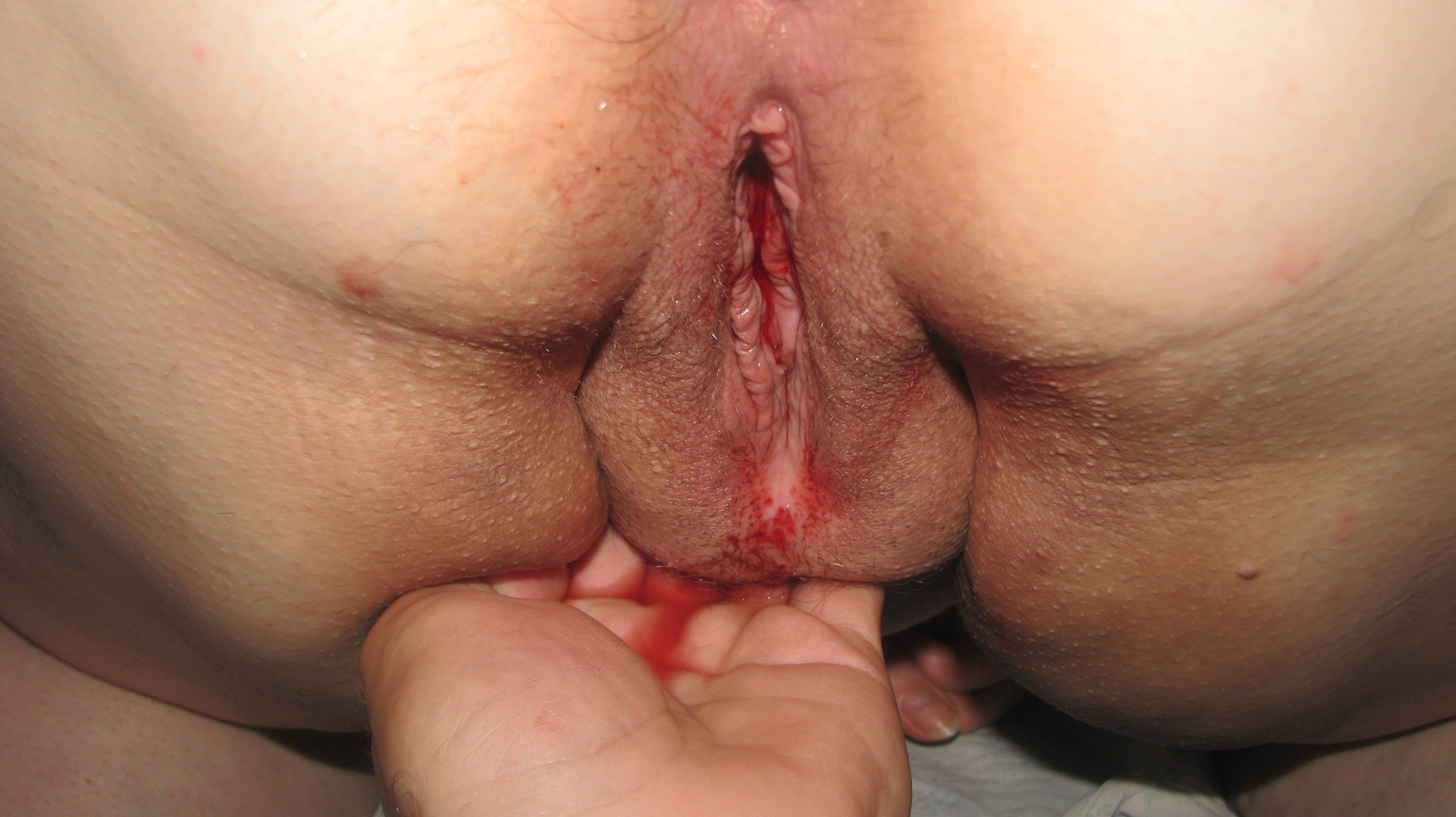
Hemorrhoid Treatment
For mild hemorrhoids, treatment may include:
- Topical creams or ointments
- Sitz baths
- Increased fiber intake
- Over-the-counter pain relievers
For more severe cases, medical procedures like rubber band ligation or hemorrhoidectomy may be necessary.
Anal Fissure Management
Treatment for anal fissures often involves:
- Topical pain relievers
- Stool softeners
- Sitz baths
- Prescription medications to relax anal sphincter muscles
In chronic cases, botox injections or surgical repair may be recommended.
STI Treatment
Sexually transmitted infections are typically treated with antibiotics or antiviral medications, depending on the specific infection.
Inflammatory Bowel Disease Management
For conditions like Crohn’s disease or ulcerative colitis, treatment may include:
- Anti-inflammatory medications
- Immunosuppressants
- Dietary changes
- In severe cases, surgery
Preventing Anal Health Issues
While not all anal health problems can be prevented, there are steps you can take to reduce your risk:
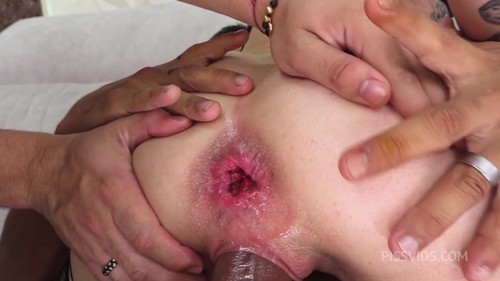
- Maintain good hygiene
- Eat a high-fiber diet and stay hydrated
- Avoid straining during bowel movements
- Exercise regularly to promote healthy bowel function
- Practice safe sex and get regular STI screenings
- Avoid sitting for prolonged periods
- Seek prompt treatment for any anal discomfort or bleeding
By understanding the causes of anal bleeding and pain and taking proactive steps to maintain anal health, you can reduce your risk of complications and enjoy better overall well-being. Remember, your healthcare provider is your best resource for personalized advice and treatment for any anal health concerns.
Q&A: What causes bleeding & pain from your butt?
Skip to content
Sexual health
Pierre-Cédric Crouch, PhD, ANP-BC answers our burning questions about butt pain. Here’s what to do if you notice pain, swelling or blood.
By Douchie
July 19, 2018 3 Minute Read
Maybe you’ve had this happen before: You wipe your butt and notice red streaks on the toilet paper. Or you wipe up after bottoming and you see blood on the towel. What’s going on?
Bleeding and pain can be symptoms of something minor like hemorrhoids to something more serious like lymphogranuloma venereum (LGV). To learn more about what to do if you experience bleeding from your butt, I asked San Francisco AIDS Foundation director of nursing Pierre-Cédric Crouch, PhD, ANP-BC, ACRN some “burning” questions I had.
Q: Thanks for answering my questions, Pierre! What are some reasons a person might bleed from their butt?
Pierre: You can bleed for a lot of different reasons. It could be something as simple as hemorrhoids or an anal fissure (get the details on anal fissures). But other things can make you bleed too: genital warts, ulcers, herpes, even having a painful bowel movement. You can also get bloody discharge from lymphogranuloma venereum (LGV).
It could be something as simple as hemorrhoids or an anal fissure (get the details on anal fissures). But other things can make you bleed too: genital warts, ulcers, herpes, even having a painful bowel movement. You can also get bloody discharge from lymphogranuloma venereum (LGV).
Q: I’ve never heard of LGV before. Tell me more!
Pierre: LGV is a sexually transmitted bacterial infection that is caused by a type of chlamydia bacteria. It’s more common in men than women, and people who are living with HIV seem to be more likely to get it. When you get tested for chlamydia, your test would be positive if you have LGV but your provider would have to order a special test to see if it’s LGV. You don’t need to test specifically for LGV if you aren’t having any symptoms.
Because the infection affects the lymphatic system, it can cause swelling and redness in the groin area and drainage through the skin from the lymph nodes in the groin. It can also affect the lymph nodes around your butt if you have anal sex, and you might experience bloody discharge from your butt.:max_bytes(150000):strip_icc()/hemorrhage-in-miscarriage-meaning-2371523-FINAL-0f9c41c855264f62898bce95afb0f3f7.png)
Q: Yikes! Sounds awful. Can LGV be treated?
Pierre: Absolutely. We treat LGV with antibiotics. If you have symptoms, the treatment lasts for three weeks (which is longer than we treat other types of chlamydia).
Q: You mentioned hemorrhoids potentially causing bleeding. Besides looking unpleasant, are hemorrhoids a health concern?
Pierre: Hemorrhoids are swollen veins that happen inside the rectum or on the anus. Straining when you poop can cause them, as can anal sex. Sometimes they are not serious and go away on their own. But sometimes they don’t go away—in those cases, you can get them treated.
I know some healthcare providers take the position that if your butt functions, it’s fine. They think ‘who cares what your butt looks like if you’re able to use it?’ But that view doesn’t support the health and happiness of people who bottom. Having a pretty butt is important!
Q: I love hearing about pretty butts! But for now, let’s move on to other possible causes of pain and bleeding.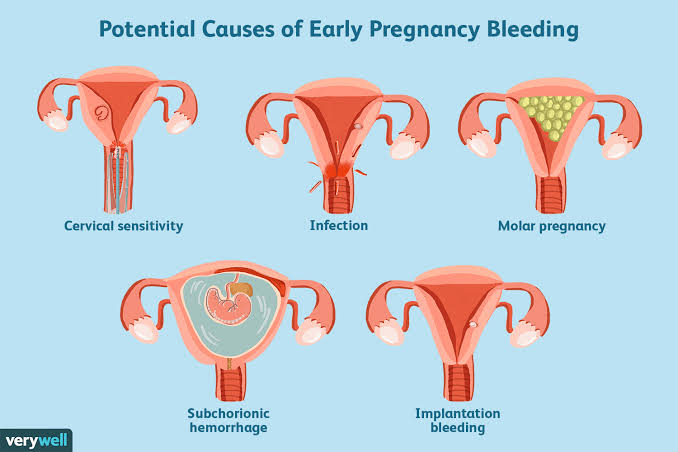 What about anal sex? Can people experience pain and bleeding from anal sex?
What about anal sex? Can people experience pain and bleeding from anal sex?
Pierre: Yes—anal sex can be another cause of pain and bleeding. No matter what you do if you bottom, if your partner is really rough, it’s going to hurt. Or if you haven’t bottomed in a long time, and you don’t take enough time to loosen yourself up, you can tear or strain a muscle. And that can cause bleeding.
Q: When should people seek help for pain or bleeding?
Pierre: If you have painful rectal bleeding, talk to your healthcare provider! I think people may delay seeking care because they are embarrassed or don’t want to talk about their butt. You have to remember that healthcare providers are used to hearing about this kind of stuff. Nothing is going to shock us. We’re here to help you feel and be healthy.
Douchie brings butt health & happiness out of the closet so you can care for your butt in the way it deserves. Get info about everything from douching to fissures with this series on all things anal. Visit sfaf.org/butthealth.
Get info about everything from douching to fissures with this series on all things anal. Visit sfaf.org/butthealth.
About the author
Anal health
Sexual health
Share this Post
What Is Rectal Bleeding? Symptoms, Causes, Diagnosis, Treatment, and Prevention
By Ashley WelchMedically Reviewed by Grant Chu, MD
Reviewed:
Medically Reviewed
Rectal bleeding, which is bleeding from the rectum or anus, is a scary but surprisingly common phenomenon.
Rectal bleeding is usually assumed to refer to bleeding from your rectum, which makes up the last few inches of your large intestine. Bleeding from higher in the intestinal tract, from the stomach, duodenum, or other parts of the small intestine, may also pass through the large intestine and appear to come from the rectum, notes MedlinePlus.
Common Questions & Answers
What are the symptoms of rectal bleeding?
Serious cases of rectal bleeding may involve abdominal pain, diarrhea, fatigue, constipation, and unintentional weight loss. The blood can show up in stool or mucus in stool, or you may see it on underwear, on toilet paper, or in toilet water.
What are common causes of rectal bleeding?
Rectal bleeding is most often caused by hemorrhoids and anal fissures. Diverticulitis, a condition in which tiny bulges appear on the colon wall, and colitis, which is the inflammation of the lining of the colon, may also be causes.
How serious is rectal bleeding?
Rectal bleeding is a scary but common phenomenon. Typical causes like hemorrhoids or anal fissures aren’t life threatening, but in some cases, rectal bleeding can be a sign of colon cancer or, more rarely, anal cancer.
Typical causes like hemorrhoids or anal fissures aren’t life threatening, but in some cases, rectal bleeding can be a sign of colon cancer or, more rarely, anal cancer.
Is rectal bleeding bright red?
Blood from rectal bleeding ranges in color from bright red to maroon to black or tar-colored.
When should you worry about rectal bleeding?
Light rectal bleeding caused by constipation or hemorrhoids rarely needs medical attention. If the bleeding doesn’t stop after a week, check with your doctor. Bleeding due to colorectal cancer may occur in small amounts over time, so also check with your doctor if you notice this pattern.
Signs and Symptoms of Rectal Bleeding
Blood from rectal bleeding ranges in color from bright red to maroon to black or tar colored. Blood can be on or in the stool, be combined with mucus in the stool, or appear on your clothes and underwear, on toilet paper, or in the toilet water.
Symptoms that commonly occur with serious rectal bleeding include:
- Abdominal pain
- Dizziness
- Fatigue
- Diarrhea
- Constipation
- Unintentional weight loss
Causes and Risk Factors of Rectal Bleeding
The most common causes of rectal bleeding are diverticulosis, hemorrhoids, anal fissures, and colitis, according to the Cleveland Clinic.
Diverticulosis is the most frequent cause of rectal bleeding. It is the presence of tiny bulges, called diverticula, in the colon wall. Diverticula are common and typically do not cause problems, but they can sometimes protrude through the walls of the bowels, leading to bleeding or infections.
Often called piles, hemorrhoids are swollen veins that appear at the bottom of the large intestine and outside the anus. They may be caused by excessive straining, such as while making a bowel movement, sitting on the toilet too long, or in women, pregnancy and giving birth. People who have persistent hemorrhoids are often constipated, are overweight or obese, or eat a very low-fiber diet.
Hemorrhoids can be itchy, painful, and annoying, but they are rarely serious and often go away on their own. In certain cases, treatment may be needed.
Anal fissures, another cause of rectal bleeding, are tiny tears in the anus and anal canal commonly caused by straining with hard stools.
Colitis is the inflammation of the lining of the tissues of the colon. This inflammation can lead to rectal bleeding. Ischemic colitis occurs when blood flow to the colon is reduced, typically as a result of narrowed or blocked arteries. With infectious colitis, the swelling of the colon is caused by bacteria, viruses, or parasites.
Less common causes of rectal bleeding include intestinal polyps, proctitis, colon cancer, inflammatory diseases of the bowel, or rapid bleeding from the stomach or upper GI tract.
Intestinal polyps are masses of tissue that protrude from the bowel wall, sometimes causing minor bleeding. Proctitis is an inflammation of the lining of the rectum. If you have proctitis, you may feel rectal pain and the continuous sensation of having to make a bowel movement.
Colorectal cancer is one of the most serious causes of rectal bleeding. Anal cancer, which is less common than colorectal cancer, can also cause rectal bleeding.
People with an inflammatory bowel disease, such as Crohn’s disease or ulcerative colitis, may also experience rectal bleeding and related symptoms, such as abdominal pain, diarrhea, constipation, ulcers, and a higher risk for colorectal cancers.
How Is Rectal Bleeding Diagnosed?
When you see a doctor for rectal bleeding, you’ll be asked a series of questions to help identify the cause. These can include when the rectal bleeding began, any foods you ate prior to the onset of symptoms, if you were constipated, and if you were straining during your bowel movement.
Your doctor will also perform a medical exam and take your medical history.
Tests that may help determine the cause of rectal bleeding include:
- Colonoscopy, in which a long, flexible tube with a tiny camera on its tip is inserted into the rectum. This allows your doctor to view the inside of the entire colon and look for any abnormalities, notes the Mayo Clinic.
- Sigmoidoscopy, in which a healthcare provider uses a sigmoidoscope, a flexible tube with a light and camera, to view the lower part of your colon and rectum. This test can help diagnose bowel disorders and cancer, per the Cleveland Clinic.
- Fecal occult blood test, which is a lab test to detect hidden, or occult, blood in stool.
 The test can be done in a few ways, either by the patient collecting stool samples and returning them to their doctor or a lab or by using a flushable pad or tissue that changes color when blood is present, according to the Mayo Clinic.
The test can be done in a few ways, either by the patient collecting stool samples and returning them to their doctor or a lab or by using a flushable pad or tissue that changes color when blood is present, according to the Mayo Clinic.
Duration of Rectal Bleeding
How long rectal bleeding lasts will vary based on the individual and condition causing it.
Rectal bleeding from hemorrhoids can last anywhere from a few seconds to several minutes with bowel movements. Bleeding may also occur occasionally between bowel movements. Talk to your doctor if you have rectal bleeding or if you have hemorrhoids that don’t clear up after a week, notes the Mayo Clinic.
Anal fissures typically heal within a couple of weeks, according to the National Health Service in Great Britain.
Rectal bleeding associated with polyps or colorectal cancer may occur in small amounts over time until a doctor identifies the cause and treats it.
Treatment and Medication Options for Rectal Bleeding
If you are experiencing rectal bleeding, the first thing to do is try to identify the cause. The cause will determine any treatment you may seek.
The cause will determine any treatment you may seek.
For example, losing weight, consuming more fiber-rich foods, and taking over-the-counter treatments are usually effective at managing the symptoms of hemorrhoids, according to the Mayo Clinic.
Anal fissures can usually be managed with treatment for constipation and the use of moistened wipes, which soothe the area around the anus. Anal fissures rarely require medical treatment or surgery, notes the Mayo Clinic.
More serious causes of rectal bleeding, such as bowel disease or cancer, may require more advanced treatment. People living with Crohn’s disease, for instance, may be prescribed medications like corticosteroids or immunotherapy. Those with cancer may require surgery to remove tumors, per the Cleveland Clinic.
Prevention of Rectal Bleeding
The best way to prevent rectal bleeding is to prevent its chief causes.
To prevent hemorrhoids, it’s important to keep your stools soft so they can pass easily.:max_bytes(150000):strip_icc()/can-birth-control-pills-cause-a-miscarriage-2371726-1-a8bc6e0aa90f4f3484f659b233da3ecf.png) To do this, drink plenty of fluids and eat a diet high in fiber. Go to the bathroom as soon as you feel the urge and avoid straining when passing stools. Also, limit your time sitting on the toilet.
To do this, drink plenty of fluids and eat a diet high in fiber. Go to the bathroom as soon as you feel the urge and avoid straining when passing stools. Also, limit your time sitting on the toilet.
Anal fissures can be prevented by avoiding irritating the rectum and wiping the area with soft tissues, a moistened cloth, or cotton pad. Don’t use rough or scented toilet paper.
People at an increased risk for colorectal cancer should undergo regular screenings, primarily colonoscopy. Colorectal cancer screenings can detect precancerous polyps in the colon or rectum so that they can be removed before they turn into cancer. Screenings can also identify colorectal cancer early, when treatment is more likely to be successful.
According to the Centers for Disease Control and Prevention (CDC), about 90 percent of new cases of colorectal cancer occur in people over age 50. Therefore, the U.S. Preventive Services Task Force recommends that adults age 45 to 75 be screened for colorectal cancer. How often you undergo screening is determined by your risk and should be discussed with your doctor. Adults age 76 to 85 should talk to their physician about whether they should continue to be screened, the CDC says.
How often you undergo screening is determined by your risk and should be discussed with your doctor. Adults age 76 to 85 should talk to their physician about whether they should continue to be screened, the CDC says.
Lifestyle changes can also help reduce the risk of colorectal cancer, including quitting smoking, maintaining a healthy weight, getting regular physical activity, and limiting red meat consumption and alcohol use, according to the American Cancer Society (ACS).
According to the 2020–2025 U.S. Dietary Guidelines for Americans, if alcohol is consumed, it should be done in moderation, meaning up to one drink per day for women and up to two drinks per day for men.
Complications of Rectal Bleeding
Light rectal bleeding or spotting due to constipation or hemorrhoids in people under 40 rarely needs medical attention. However, if your rectal bleeding is continuous or heavy, it could lead to shock, a life-threatening condition in which the body is not getting enough blood flow. If not treated, this can result in organ damage. According to the Mayo Clinic, you should seek medical attention immediately if you are experiencing rectal bleeding and any of the signs of shock, including:
If not treated, this can result in organ damage. According to the Mayo Clinic, you should seek medical attention immediately if you are experiencing rectal bleeding and any of the signs of shock, including:
- Faintness
- Nausea
- Rapid, shallow breathing
- Blurred vision
- Dizziness or lightheadedness
- Confusion
- Clammy, pale skin
- Low urine output
Untreated polyps in the colon or rectum that cause rectal bleeding can lead to colorectal cancer.
Research and Statistics: How Many People Have Rectal Bleeding?
While no statistics exist stating exactly how many people are affected by rectal bleeding at any given time, research suggests that it’s a common enough occurrence.
A study published in the British Journal of General Practice found that the consultation rate for rectal bleeding in patients over age 34 was 15 per 1,000 per year.
According to the National Institute of Diabetes and Digestive and Kidney Diseases, hemorrhoids, a major cause of rectal bleeding, affect about 1 in 20 adults in the United States. About half of adults over age 50 have hemorrhoids.
About half of adults over age 50 have hemorrhoids.
About 1 in 10 people are affected by anal fissures at some point in their lives.
According to the ACS, excluding skin cancers, colorectal cancer is the third most common cancer diagnosis in the United States. In 2020, the ACS estimates that there were 104,610 new cases of colon cancer and 43,340 new cases of rectal cancer.
Black Americans and Rectal Bleeding
While there are no statistics on rectal bleeding in different ethnic groups, colorectal cancer disproportionately affects the Black American community. According to the ACS, Black Americans are 20 percent more likely to receive a colorectal cancer diagnosis and are 40 percent more likely to die from it than people in other groups.
While the reasons for this disparity are complex, they reflect racial differences in risk factors, access to healthcare, and socioeconomic status. Black Americans have higher rates of obesity, with non-Hispanic Black Americans about 1.:max_bytes(150000):strip_icc()/1941711-causes-of-black-stool-01-5b057bccfa6bcc0037c676bb.png) 3 times more likely to be obese compared with non-Hispanic white Americans, the U.S. Department of Health and Human Services Office of Minority Health reports.
3 times more likely to be obese compared with non-Hispanic white Americans, the U.S. Department of Health and Human Services Office of Minority Health reports.
Black Americans also experience greater obstacles to cancer prevention, detection, treatment, and survival. Such obstacles include lower paying jobs, lack of health insurance, lack of access to healthy and affordable foods, and low-quality housing and education.
Related Conditions and Causes of Rectal Bleeding
Colorectal cancer is one of the most serious causes of rectal bleeding. It is the third leading cause of cancer-related death in men and women, although death rates are dropping, thanks to earlier detection.
When cancer develops in a polyp, it can grow into the wall of the colon or rectum over time. From there, the cancer can grow into blood vessels or lymph nodes and can spread to nearby lymph nodes or different parts of the body. Screening for polyps is key to preventing colorectal cancer or catching it early so it can be treated, notes the ACS.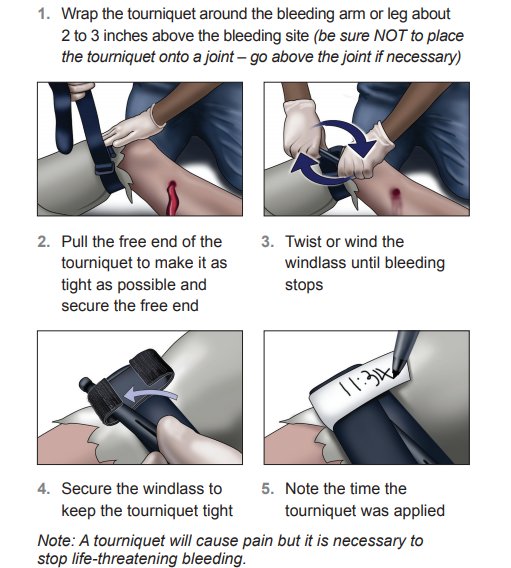
Anal cancer is an uncommon type of cancer occurring in the anal canal that can cause rectal bleeding. According to the ACS, there were an estimated 8,590 new cases of anal cancer in 2020 and 1,350 deaths.
Most people with anal cancer are treated with chemotherapy and radiation. This type of cancer rarely spreads to different parts of the body. As such, many patients with anal cancer can be cured, notes the Mayo Clinic.
Resources We Love
Favorite Organizations for Essential Information on Rectal Bleeding
American Society for Gastrointestinal Endoscopy
Founded nearly eight decades ago, this professional organization of physicians is dedicated to advancing patient care and digestive health. Get all the info you need on common causes of rectal bleeding, including hemorrhoids, anal fissures, polyps, and colon and anal cancer.
American Cancer Society
ACS is a nationwide organization dedicated to advocating for people with cancer and eliminating cancer as a major health problem.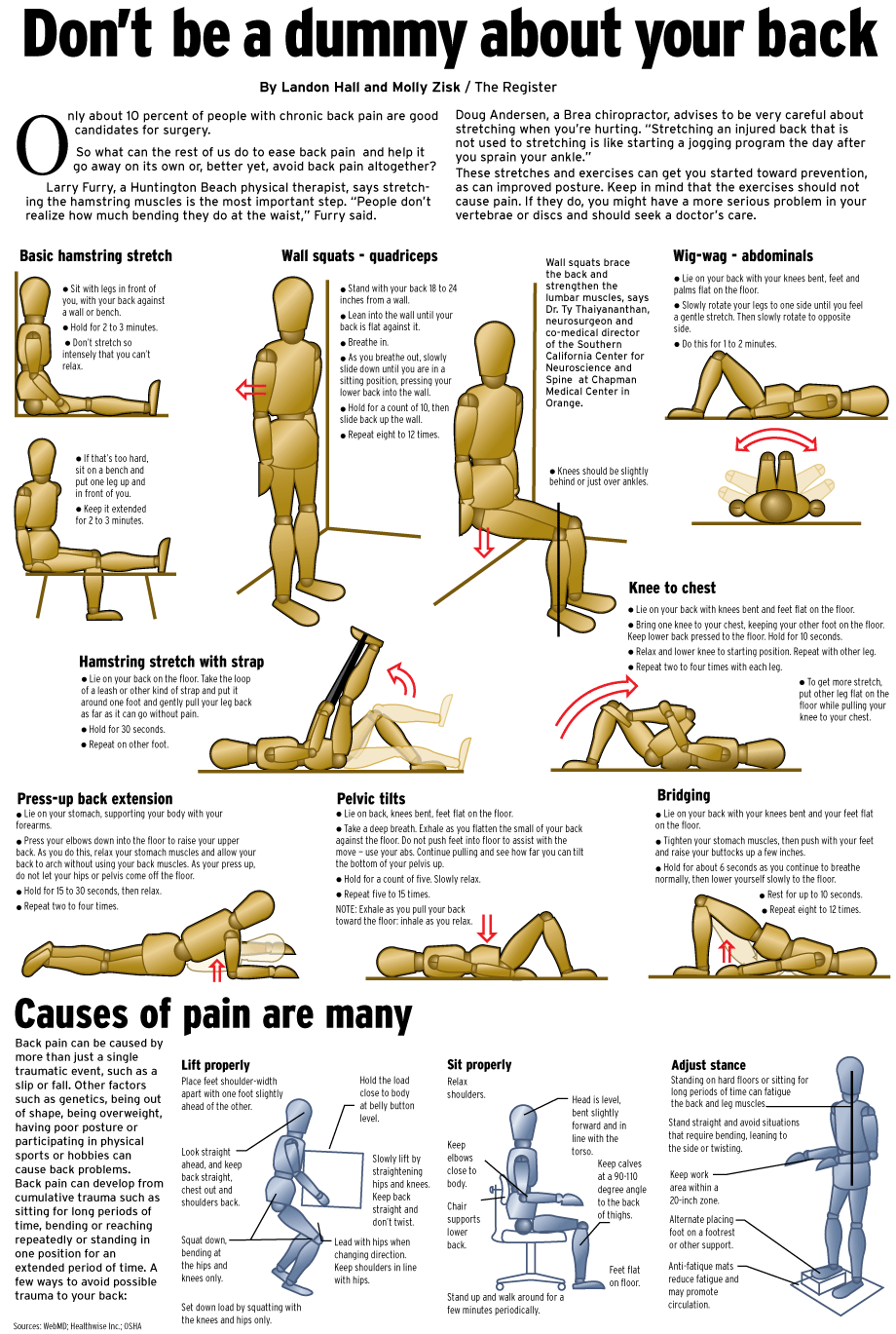 It is the ultimate source of information if you or a loved one is worried about colorectal cancer, has recently been diagnosed, is going through treatment for colorectal cancer, or is trying to stay well after treatment.
It is the ultimate source of information if you or a loved one is worried about colorectal cancer, has recently been diagnosed, is going through treatment for colorectal cancer, or is trying to stay well after treatment.
Cleveland Clinic
The Cleveland Clinic offers an array of information on possible causes of rectal bleeding, care and treatment, and when to call a doctor.
Editorial Sources and Fact-Checking
- Gastrointestinal Bleeding. MedlinePlus. May 4, 2016.
- Rectal Bleeding. Cleveland Clinic. August 13, 2020.
- Colonoscopy. Mayo Clinic. May 18, 2022.
- Flexible Sigmoidoscopy. Cleveland Clinic. October 19, 2020.
- Fecal Occult Blood Test. Mayo Clinic. May 4, 2022.
- Hemorrhoids: Symptoms and Causes. Mayo Clinic. May 12, 2021.
- Anal Fissure. National Health Service. November 9, 2021.
- Hemorrhoids: Diagnosis and Treatment. Mayo Clinic. May 12, 2021.
- Anal Fissure: Diagnosis and Treatment.
 Mayo Clinic. November 17, 2020.
Mayo Clinic. November 17, 2020. - Anal Fissures. Cleveland Clinic. February 22, 2019.
- What Should I Know About Screening? Centers for Disease Control and Prevention. February 17, 2022.
- Colorectal Cancer Risk Factors. American Cancer Society. June 29, 2020.
- Dietary Guidelines for Alcohol. Centers for Disease Control and Prevention. April 19, 2022.
- Rectal Bleeding. Mayo Clinic. January 6, 2022.
- Ellis BG, Thompson MR, Factors Identifying Higher Risk Rectal Bleeding in General Practice. British Journal of General Practice. December 2005.
- Definition and Facts of Hemorrhoids. National Institute of Diabetes and Digestive and Kidney Diseases. October 2016.
- Key Statistics for Colorectal Cancer. American Cancer Society. October 31, 2022.
- Colorectal Cancer Rates Higher in African Americans, Rising in Younger People. American Cancer Society. September 3, 2020.
- Obesity and African Americans. U.S. Department of Health and Human Services Office of Minority Health.
 March 26, 2020.
March 26, 2020. - What Is Colorectal Cancer? American Cancer Society. June 29, 2020.
- Key Statistics for Anal Cancer. American Cancer Society. January 12, 2022.
- Anal Cancer Symptoms and Causes. Mayo Clinic. August 12, 2021.
Show Less
By subscribing you agree to the Terms of Use and Privacy Policy.
What Is Heavy Metal Poisoning? Symptoms, Causes, Diagnosis, Treatment, and Prevention
Heavy metal poisoning is caused by the accumulation of certain metals in the body due to exposure in food or water, industrial chemicals, or other sources…
By Cathy Cassata
What Is Tinnitus? Symptoms, Causes, Diagnosis, Treatment, and Prevention
Everything you need to know about what tinnitus is and its causes, symptoms, and treatments. Plus, the latest on new research that aims to cure tinnitus…
By Moira Lawler
Can Using My Headphones Cause Tinnitus?
It’s definitely possible that listening to music or other audio through headphones can cause hearing loss that results in tinnitus — but it’s the volume. ..
..
By Moira Lawler
What Are Mouth Lesions? Symptoms, Causes, Diagnosis, Treatment, and Prevention
Sores on your mouth, lips, tongue and inner cheek are often caused by viral infections or minor injury.
By Paula Derrow
Potential Tinnitus Complications and Long-Term Effects
Learn about the ways having tinnitus will affect your life, including possible psychological, emotional, and medical complications you might be at higher…
By Markham Heid
What Is Vaginal Discharge? Symptoms, Causes, Diagnosis, and Treatment
Clear or white fluid that comes out of the vagina is called vaginal discharge or cervical mucus. It can be thick, pasty, or thin, and it may have no odor…
By Cathy Cassata
What Is Vaginal Itching? Symptoms, Causes, Diagnosis, Treatment, and Prevention
Vaginal itching, sometimes called vaginitis, occurs when the vagina becomes inflamed, often also causing discharge and pain.
By Cathy Cassata
Home Remedies and Integrative Treatments for Vertigo
Certain home remedies and alternative treatments, including at-home exercises, acupuncture, dietary changes, and stress management, can help ease or cure…
By Julie Lynn Marks
Vertigo Treatment to Get Rid of Spinning, Dizziness
The treatment you’ll get for your vertigo symptoms will depend on what’s causing them. Treatment ranges from physical therapy to injections.
By Julie Lynn Marks
What Is an Ovarian Cyst? Symptoms, Causes, Diagnosis, Treatment, and Prevention
What Is Endometriosis? Symptoms, Causes, Diagnosis, Treatment, and Prevention
What Is H. Pylori? Symptoms, Causes, Diagnosis, Treatment, and Prevention
Epithelial coccygeal tract (coccyx cyst, coccyx fistula): symptoms, diagnosis, treatment of epithelial coccygeal tract (coccyx cyst, coccyx fistula)
The epithelial coccygeal passage is a congenital defect in the form of a narrow channel in the soft tissues under the skin of the sacrococcygeal region. The move is located in the fold between the buttocks, and comes to the surface of the skin with one or more small holes (primary holes). Inside the passage are sweat and sebaceous glands, hair follicles, connective tissue fibers. The products of their vital activity come out through the primary openings in the form of secretions, and infection can penetrate into the tissues through the same openings.
The move is located in the fold between the buttocks, and comes to the surface of the skin with one or more small holes (primary holes). Inside the passage are sweat and sebaceous glands, hair follicles, connective tissue fibers. The products of their vital activity come out through the primary openings in the form of secretions, and infection can penetrate into the tissues through the same openings.
In the absence of inflammation, the epithelial coccygeal passage does not give practically any symptoms. An exception may be slight discharge from the course, moisturizing the skin between the buttocks, itching.
Inflammation of the epithelial coccygeal tract
When the openings of the epithelial coccygeal passage are blocked or mechanically traumatized, inflammation occurs, in which fatty tissue is involved. An abscess is formed – an abscess, which often breaks through the skin on its own. Despite the fact that after the breakthrough, the symptoms smooth out and the state of health improves, independent breakthroughs are dangerous by the formation of a fistula – a narrow channel through which pus from the inflammation zone will come out (the outer opening of the purulent fistula is formed in the zone of the abscess breakthrough). A fistula with an inflamed epithelial coccygeal passage is not associated with the rectum!
A fistula with an inflamed epithelial coccygeal passage is not associated with the rectum!
Causes of development
There are the following versions, according to which the development of pathology occurs.
- In the first case, we are talking about disorders that occur even at the stage of human embryonic development. The failure manifests itself in the appearance of thin channels that resemble enlarged pores. The canals are lined from the inside with epithelial tissue and hair; sweat and sebaceous glands emerge on their surface.
- Another reason for the development of an epithelial coccygeal tract, or pilonidal cyst, is the hormonal characteristics of the human body, which can simultaneously manifest as excessive hair growth.
- A correlation between the presence of the disease and the physiological characteristics of the patient’s body was also noticed. In particular, we are talking about strongly pronounced buttocks and an overly deep crease between them.

Symptoms of an inflamed epithelial coccygeal passage:
- Pain of different nature and intensity in the buttocks, coccyx
- Tumor-like mass above the anus
- Redness, induration and swelling of the tissues between the buttocks
- Purulent discharge in the area of inflammation
With incorrect or untimely treatment, the focus of inflammation in the epithelial coccygeal passage persists, and the disease becomes chronic. During the period of remission, there are practically no symptoms, sometimes pain or discomfort in the coccyx area may be felt, slight discharge from the openings of the passage appears. At the same time, the focus of inflammation inside the tissues remains, and the disease can worsen at any time. For a chronic inflammatory process in the epithelial coccygeal course, the appearance of infiltrates, purulent fistulas, recurrent abscesses is characteristic.
Treatment
Treatment of the epithelial coccygeal passage is surgical.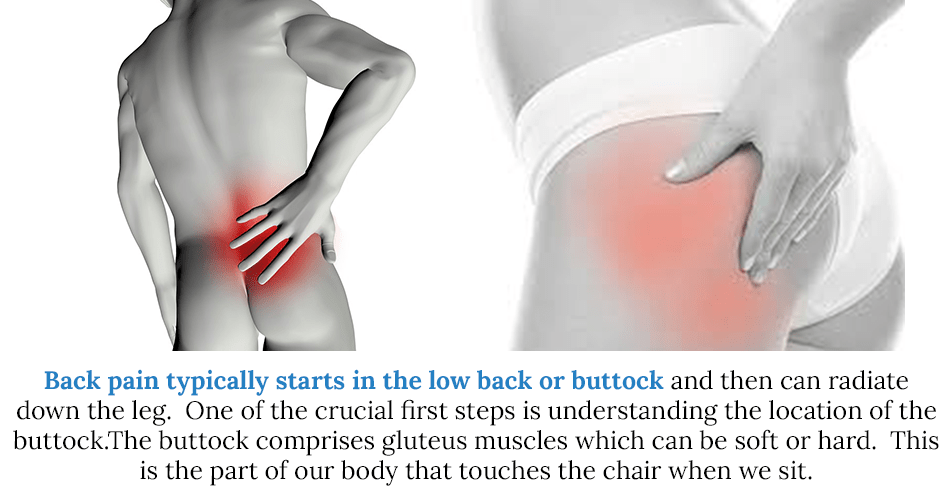 Conservative treatment does not remove the main source of inflammation. If surgical treatment is not carried out in time, the entire area near the sacrum and coccyx is involved in the inflammatory process, purulent fistulas can open not only in the sacrum, but also on the skin of the perineum. In such cases, surgery will still be required, but its volume can become much larger.
Conservative treatment does not remove the main source of inflammation. If surgical treatment is not carried out in time, the entire area near the sacrum and coccyx is involved in the inflammatory process, purulent fistulas can open not only in the sacrum, but also on the skin of the perineum. In such cases, surgery will still be required, but its volume can become much larger.
It is important to understand that opening an abscess alone can slightly reduce symptoms, and the patient will feel relief. However, it is impossible to talk about the cure of pathology in this case. In most cases, a pilonidal cyst develops into chronic inflammation. Only a radical operation allows you to completely eliminate the disease and consists in the complete removal of the epithelial passage and all its branches. The duration of the operation, depending on its volume, is 20-30 minutes. Adequate anesthetic support helps to avoid discomfort during the intervention. The period of disability after surgical treatment is minimized.
Proctologist’s consultation
Pathology in the form of an epithelial coccygeal passage occurs only in men. The frequency of diagnosing this disease is quite high – 1 case per 300-400 born boys. At a younger age, a pilonidal cyst may not cause inconvenience and does not manifest itself in any way. However, with the onset of puberty and older, it is difficult to ignore the disease.
At the appointment, the proctologist diagnoses an uncomplicated epithelial-coccygeal course during a visual examination, the symptom confirming the pathology is the holes in the fold between the buttocks. If, along with this, local inflammation is detected and fistulous passages are noticeable, the proctologist can diagnose a complicated pilonidal cyst. Also during the consultation, the proctologist conducts a digital examination aimed at excluding other pathologies. In particular, it is necessary to make sure that there are no changes in the region of the morganian crypts – anatomical depressions in the terminal segment of the rectum, as well as in the region of the coccygeal and sacral vertebrae.
Blood from the anus: bleeding from the anus during defecation
The appearance of blood from the anus during or after a bowel movement can alarm people, regardless of how and when it is found – on toilet paper or after a coprogram (fecal analysis). Expert proctologists unquestioningly agree in one opinion – this symptom informs about the pathology in the anal canal and / or above the located sections of the colon.
Depending on the severity of the patient’s pathology, the appearance of blood in the anus may be accompanied by pain in the lower abdomen, vomiting, manifestations of general weakness or nausea, an upset digestive system, anemia, and weight loss.
Causes of blood in the stool
Rectal bleeding indicates bleeding in the rectum or colon. The color of blood can be either scarlet or red. Doctors also pay attention to the color of the stool itself, as blood can stain it black.
Let’s highlight the main factors for the appearance of blood from the anus:
Anal fissures
An anal fissure is a mechanical damage to the anoderm (skin of the anal canal) in the form of small cuts or tears, accompanied by painful stabbing sensations and discomfort after defecation.
Polyps or cancer
Benign growths on the wall of the anal canal, called polyps, which, as they grow, can cause bleeding and degenerate into rectal cancer.
Colitis
Inflammatory processes in the colon, affecting its mucous membrane.
diverticular disease
Diverticula are herniated protrusions on the wall of the large intestine in the form of small sacs. When an infection occurs under the influence of viruses or bacteria, they can become inflamed and bleed, and also cause quite a strong pain syndrome.
Angiodysplasia of the intestine
The condition of fragility of the venous vessels, leading to bleeding.
peptic ulcer
Inflammatory processes on the wall of the stomach, small intestine or duodenum, which are caused by the pathogenic activity of the bacterium Helicobacter pylori. Inflammation can also occur on the basis of long-term drug therapy with non-steroidal anti-inflammatory drugs.:max_bytes(150000):strip_icc()/after-hemorrhoid-surgery-3156810_v2-79be48947d7e47a89129da2c38bc5173.png)
Diagnosis by a proctologist when blood appears from the anus
If a person has a roof in the anus, it is necessary to sign up for a consultation with a proctologist with an examination. Visual inspection of the anal canal is carried out in the form of special instrumental techniques, including:
1. Anoscopy
Painless research technique, which is assigned to the majority of patients applying for an appointment. Allows you to identify many proctological diseases at an early stage, as well as their exact localization in the rectum and anal canal. For example: anal fissures, condylomas and papillomas of the anal canal, benign or malignant neoplasms, inflammatory processes of the rectum, fistulas, hypertrophied papillae of the rectal walls, polyps, etc.
Before the anoscopy procedure, the patient must prepare, namely, make a cleansing enema of 1.5-2 liters, or special microclysters. If desired, you can use laxatives, which should be taken on the eve of the appointment (in the evening when the doctor visits in the morning).
The doctor examines the anal canal using a special device – an anoscope – a tube with a light guide at the end. Next, biological material (mucus) is taken from the surface of the anal canal, followed by sending it to the laboratory for histological analysis. The duration of the procedure is on average about 10-15 minutes.
2. Videorectoromanoscopy
A more effective procedure for endoscopic examination of the anal canal to a depth of 8 to 20 centimeters, from the rectum to the sigmoid colon. Thanks to this technique, the attending proctologist can accurately assess the condition of the intestine, as well as identify scars, polyps, inflamed hemorrhoids and other neoplasms. Subject to removal.
For the study, a video rectoscope is used – an endoscopic device with the ability to record a video examination in real time. The patient also has the opportunity to see a picture of the state of the anal canal on the monitor.
The procedure has several contraindications for carrying out, including: acute anal fissure, acute purulent inflammatory processes in the study area. If the patient wishes, local anesthesia is used for greater comfort during the examination. The duration of the procedure is no more than 15-20 minutes. As soon as possible, the patient receives the results of the study, as well as a recording of the procedure from a video rectoromanoscope.
If the patient wishes, local anesthesia is used for greater comfort during the examination. The duration of the procedure is no more than 15-20 minutes. As soon as possible, the patient receives the results of the study, as well as a recording of the procedure from a video rectoromanoscope.
3. Digital examination of the rectum
A mandatory research method, as a result of which the attending physician decides on the subsequent procedures – sigmoidoscopy and anoscopy.
Thanks to a digital rectal examination, the proctologist receives information about the current state of the muscular system of the anal canal, detects bleeding, and other pathological conditions:
anal fissures
Enlargement of hemorrhoids,
Cicatricial pathologies of the walls of the rectum,
Neoplasms of various etiologies
Foreign bodies.
In addition, a digital examination helps to study the state of the internal organs of the reproductive system of women and the prostate gland (prostate) in men.
The biggest advantage of this technique is the ability to assess the condition of the upper semicircle of the rectal wall, ascending above the anus, and which is not available for any of the above types of proctological examination.
The procedure is not performed if a narrowing of the anus is diagnosed, or with a pronounced pain syndrome.
During a digital examination, the proctologist inserts the index finger of the right hand into the lumen of the anal canal, gently probing its walls, from the sphincter. Depending on the collected history, the specialist assesses the condition of the mucous membrane of the walls, pain on palpation, tone, elasticity and degree of extensibility of the rectum.
What diseases does blood from the anus indicate?
Here is a list of the most likely pathologies, a symptom of which may be blood during a bowel movement:
1. Hemorrhoids.
Hemorrhoids are a pathological enlargement of the veins located in the anal canal.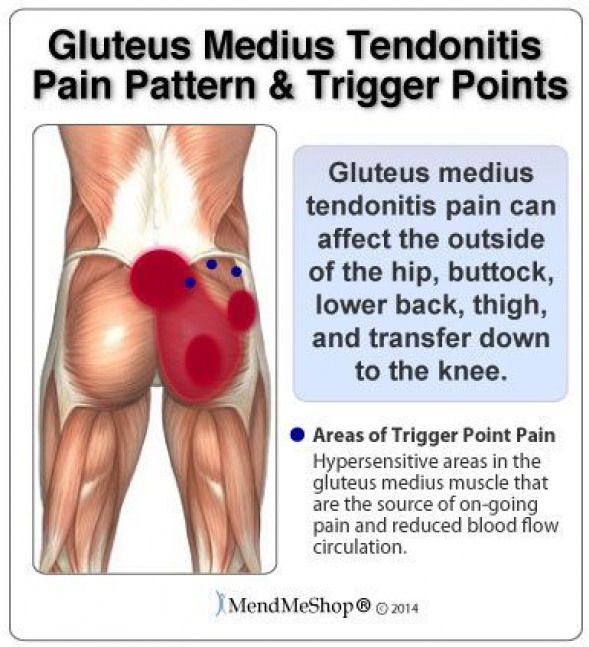 The process is accompanied by a feeling of heaviness, the presence of a foreign body in the anal canal, pain and bleeding while going to the toilet.
The process is accompanied by a feeling of heaviness, the presence of a foreign body in the anal canal, pain and bleeding while going to the toilet.
2. Anal fissure
The second most common pathological condition of the walls of the anal canal, giving the patient such inconvenience as acute pain, bleeding and frequent. The causes of anal fissure can be anal sex, frequent constipation, lifting heavy loads, diarrhea, various diseases of the gastrointestinal tract, as well as strong attempts during childbirth.
Fissures of the rectum are acute and chronic. In 80% of cases, with conservative treatment, an acute fissure heals. But with a negative result of therapy after 6 weeks, it passes into the chronic stage, as a result of which scar tissue appears on the edges of the crack.
3. Genital warts in the anal canal
Benign, small-sized formations that occur due to the penetration and reproduction of the human papillomavirus (HPV) in the body and a decrease in immunity. May cause bleeding or blood in the stool.
May cause bleeding or blood in the stool.
4. Ulcerative colitis
Chronic pathology of the large intestine, causing damage to the mucous membrane and causing diarrhea with blood impurities.
5. Diverticulitis
A disease that occurs due to the weakening of the smooth muscles of the intestinal wall and the formation of cavities in it. Over time, feces can accumulate in these cavities, causing bleeding and frequent inflammation.
In addition to these diseases, blood in the anus may indicate pathologies such as Crohn’s disease or colon cancer. In order to detect any proctological disease as early as possible and further effective treatment, Med City proctologists advise to undergo preventive examinations at least once a year. This will save you from a longer and more painful treatment of diseases in the later stages.
Who to contact if there is blood in the stool
Feces with blood impurities is an occasion for an urgent visit to the proctologist. If a patient complains about the presence of rectal bleeding to a family doctor, the latter also refers him to a gastroenterologist. If you experience additional symptoms in the form of vomiting with blood impurities, feeling severe pain in the abdomen, fever, you should immediately call an ambulance.
If a patient complains about the presence of rectal bleeding to a family doctor, the latter also refers him to a gastroenterologist. If you experience additional symptoms in the form of vomiting with blood impurities, feeling severe pain in the abdomen, fever, you should immediately call an ambulance.
What methods of treatment of proctological diseases are used to stop the symptom of blood in the anus?
The clinic “Med City” uses the most effective for our time in the capital of the methods of treatment of diseases of the anal canal.
Alloying with latex rings
Method for painless removal of inflamed hemorrhoids at stages 1, 2 or 3. The procedure does not require a stay in the hospital of a medical institution, and lasts about 2 minutes.
Radiowave surgery for proctological diseases
A widely used technique for excision of external hemorrhoids of different stages, condylomas and papillomas, anal fissures. The radio wave method is absolutely harmless to the patient, since there is no tissue traumatization. 90% effective against the above pathologies.
90% effective against the above pathologies.
Removal of hemorrhoids with a laser
A bloodless method for the quick and safe removal of external and internal hemorrhoids with an Italian-made DEKA laser. There are several types of laser treatment:
– laser hemorrhoidoplasty – using an infrared beam, the doctor acts on the node, necrotizing it (due to the cessation of blood supply in the area of application of the technique). This does not damage the anatomical structure of adjacent tissues.
Benefits of laser treatment in proctology
Bloodless procedures – no bleeding incisions (as in traditional surgery)
No seams
Safety for adjacent tissues
Low likelihood of recurrence.
If the patient notices the symptom of blood from the anus, but ignores visits to the doctor, this can lead to aggravation of the disease causing it and a deterioration in the quality of life.

 The test can be done in a few ways, either by the patient collecting stool samples and returning them to their doctor or a lab or by using a flushable pad or tissue that changes color when blood is present, according to the Mayo Clinic.
The test can be done in a few ways, either by the patient collecting stool samples and returning them to their doctor or a lab or by using a flushable pad or tissue that changes color when blood is present, according to the Mayo Clinic. Mayo Clinic. November 17, 2020.
Mayo Clinic. November 17, 2020. March 26, 2020.
March 26, 2020.